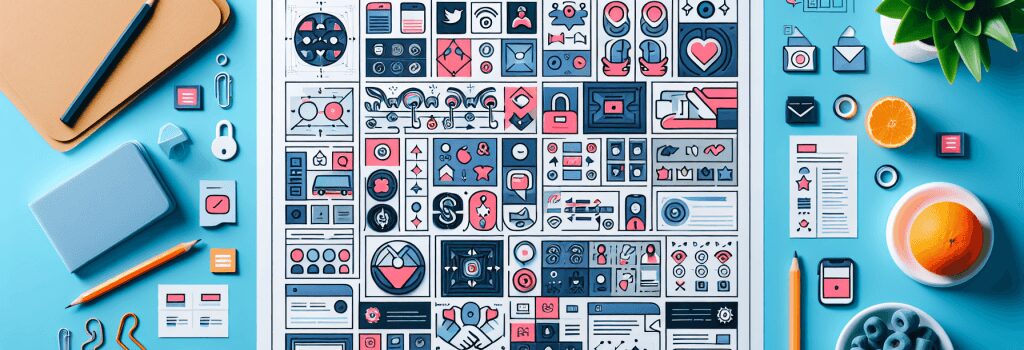Repetition and Consistency: Key Factors in User Experience

Repetition and Consistency: The Backbone of User Experience
Creating an intuitive and engaging user experience (UX) is crucial for any web developer. Whether you’re building a personal blog, an e-commerce site, or an intricate web application, understanding the principles of design, especially repetition and consistency, can significantly influence the success of your project. These principles not only enhance the aesthetic appeal of a website but also improve its functionality and user satisfaction.
Repetition: The Art of Pattern Recognition
Repetition in web design is about creating patterns that help users navigate and understand your site more efficiently. By repeating design elements, colors, and layout structures, you create a sense of familiarity that makes it easier for users to interact with your site. Repetition aids in creating a visual rhythm, guiding visitors’ attention to where it’s most needed, and reinforcing the brand identity.
Consistency: Building Trust through Familiar Experiences
Consistency, while closely related to repetition, focuses more on maintaining a uniform look and feel across all web pages and interfaces. This includes consistent use of color schemes, font styles, button shapes, and navigation layout. Consistent design elements ensure that once users learn how to interact with one part of your site, that knowledge becomes applicable across the entire platform.
Enhancing Usability with Repetition and Consistency
The ultimate goal of repetition and consistency is to enhance the usability of your site. Users prefer websites that are easy to use and understand. By applying these principles, you make your website more predictable. This predictability allows users to navigate your site with ease, leading to a more satisfying user experience.
Repetition and Consistency in Code
On the development side, maintaining consistency in your HTML, CSS, JS, and PHP code can significantly speed up the development process and make maintenance easier. Using consistent naming conventions, organizing files in a logical structure, and reusing code through components or templates are practices that align with the principles of repetition and consistency in design.
Implementing Repetition and Consistency: Best Practices
– Define a Style Guide: Start by defining a comprehensive style guide that lays down the rules for your site’s design elements. This includes typography, color palettes, button styles, and any other recurrent component.
– Use Responsive Design Patterns: Ensure your design patterns work well across all device types for consistency in the user experience, regardless of how your site is accessed.
– Implement a Component-based Approach: Leveraging components in your development process can help in achieving both design and code consistency, making your site more scalable and maintainable.
Final Thoughts
Repetition and consistency are more than just design principles; they are strategies for crafting user experiences that are intuitive, engaging, and effective. By carefully applying these concepts in your web development projects, you can significantly improve how users interact with your site, resulting in higher satisfaction and ultimately, success in your online endeavors.
—
Creating web experiences that resonate with users is a blend of art and science. Through the thoughtful application of repetition and consistency, both in visual design and code, developers can craft sites that not only captivate users but also foster an environment of ease and familiarity. Remember, the best user experience is one that goes unnoticed, seamlessly guiding users to their desired outcomes without confusion or frustration.


